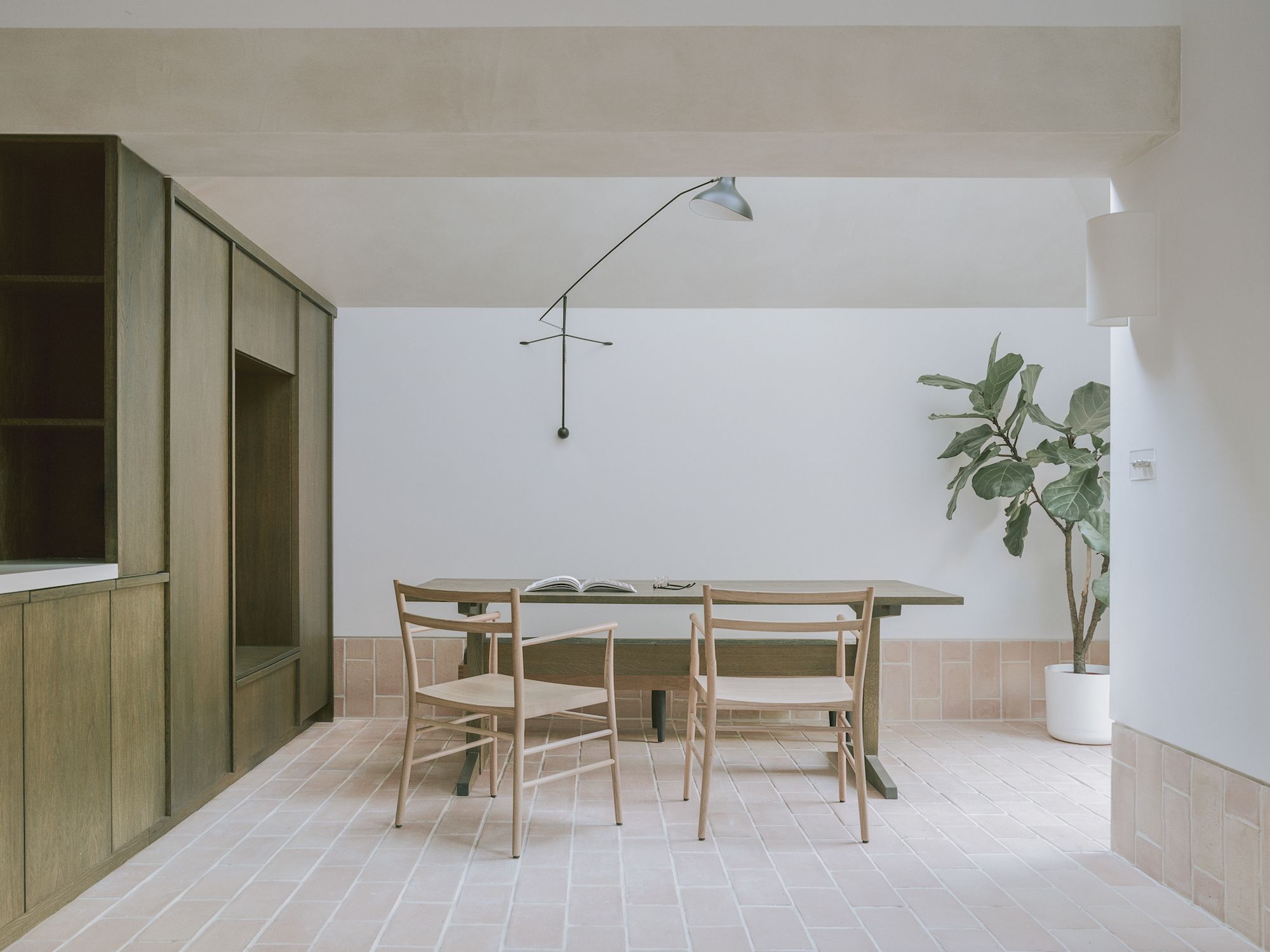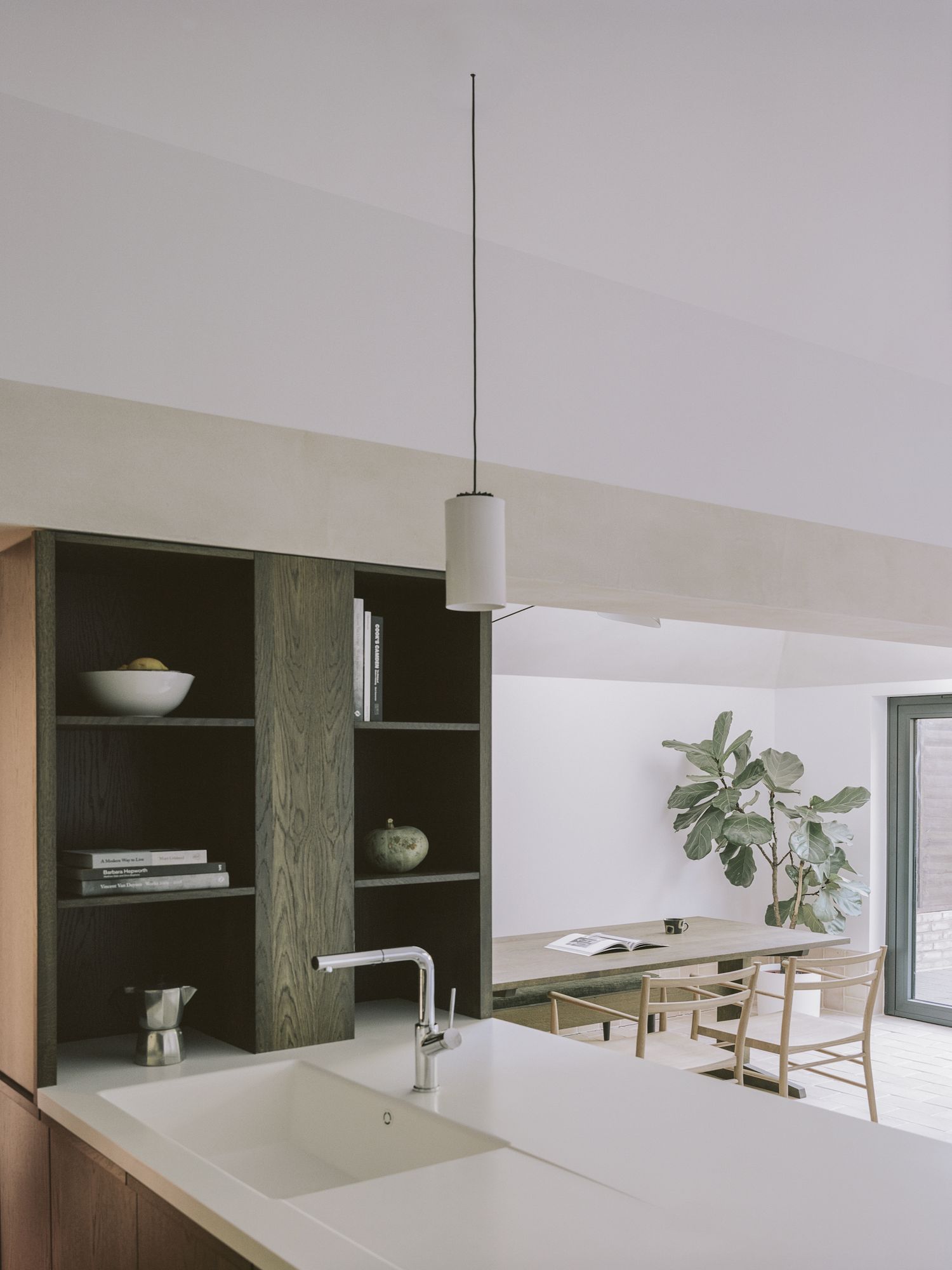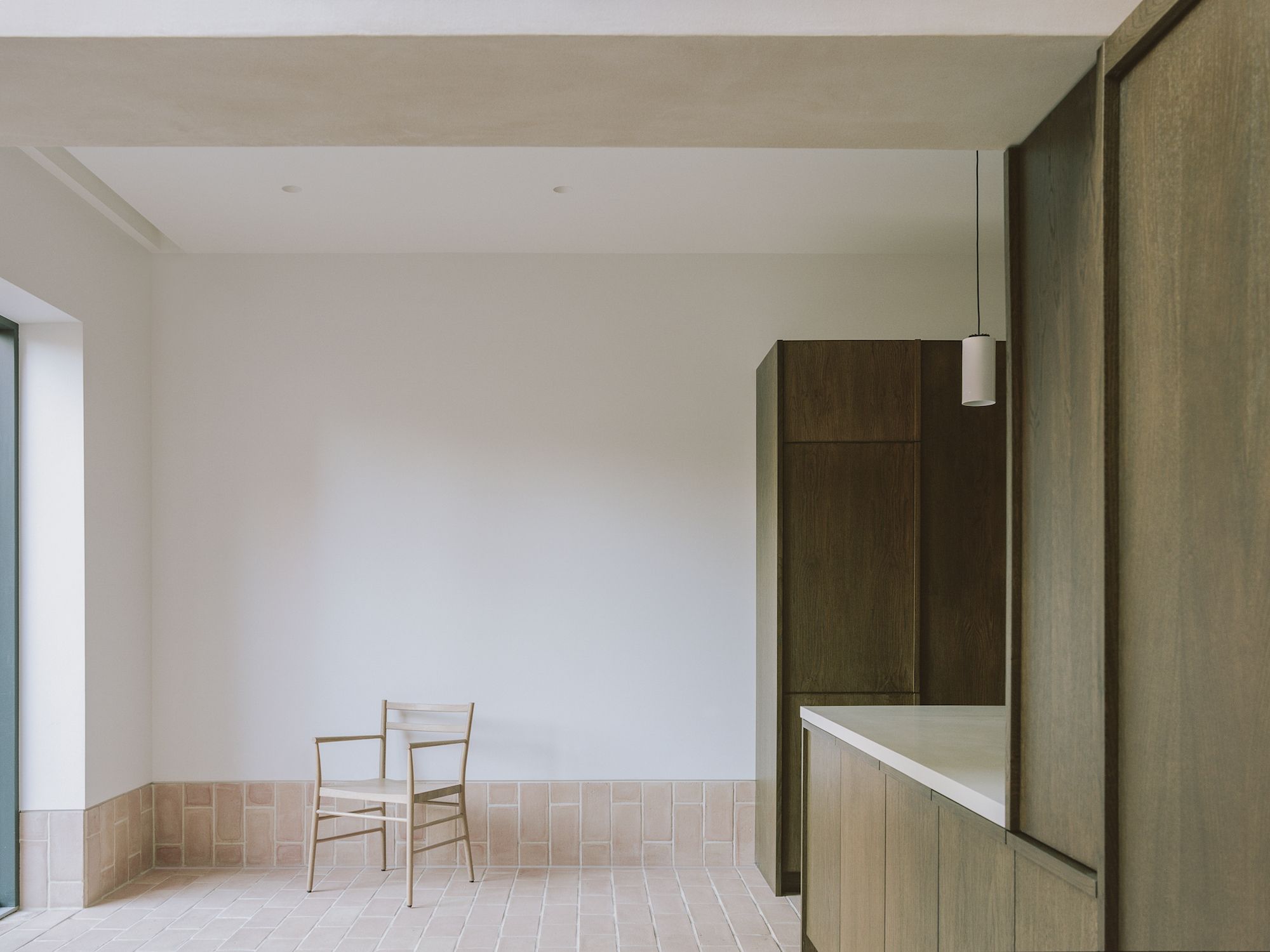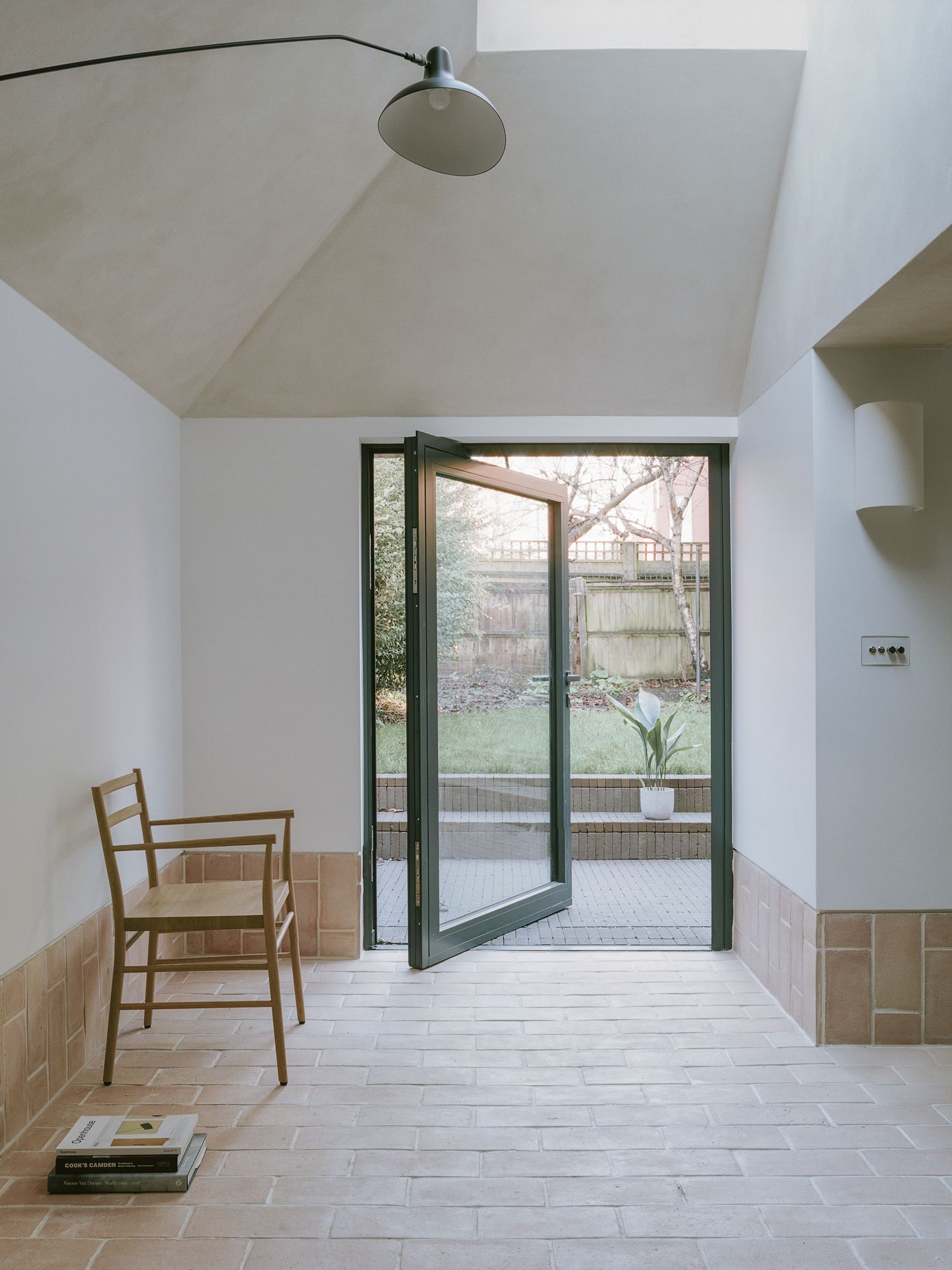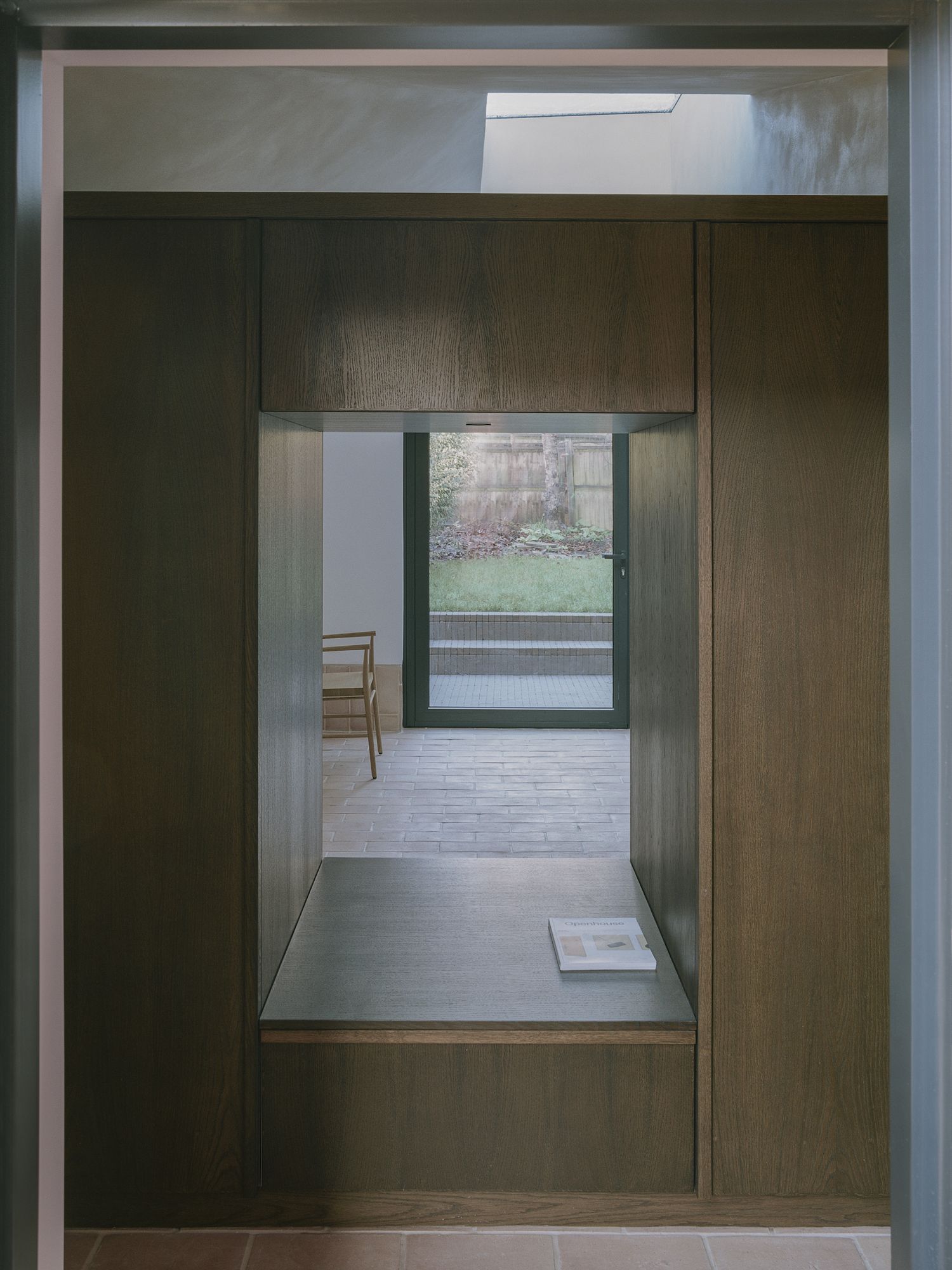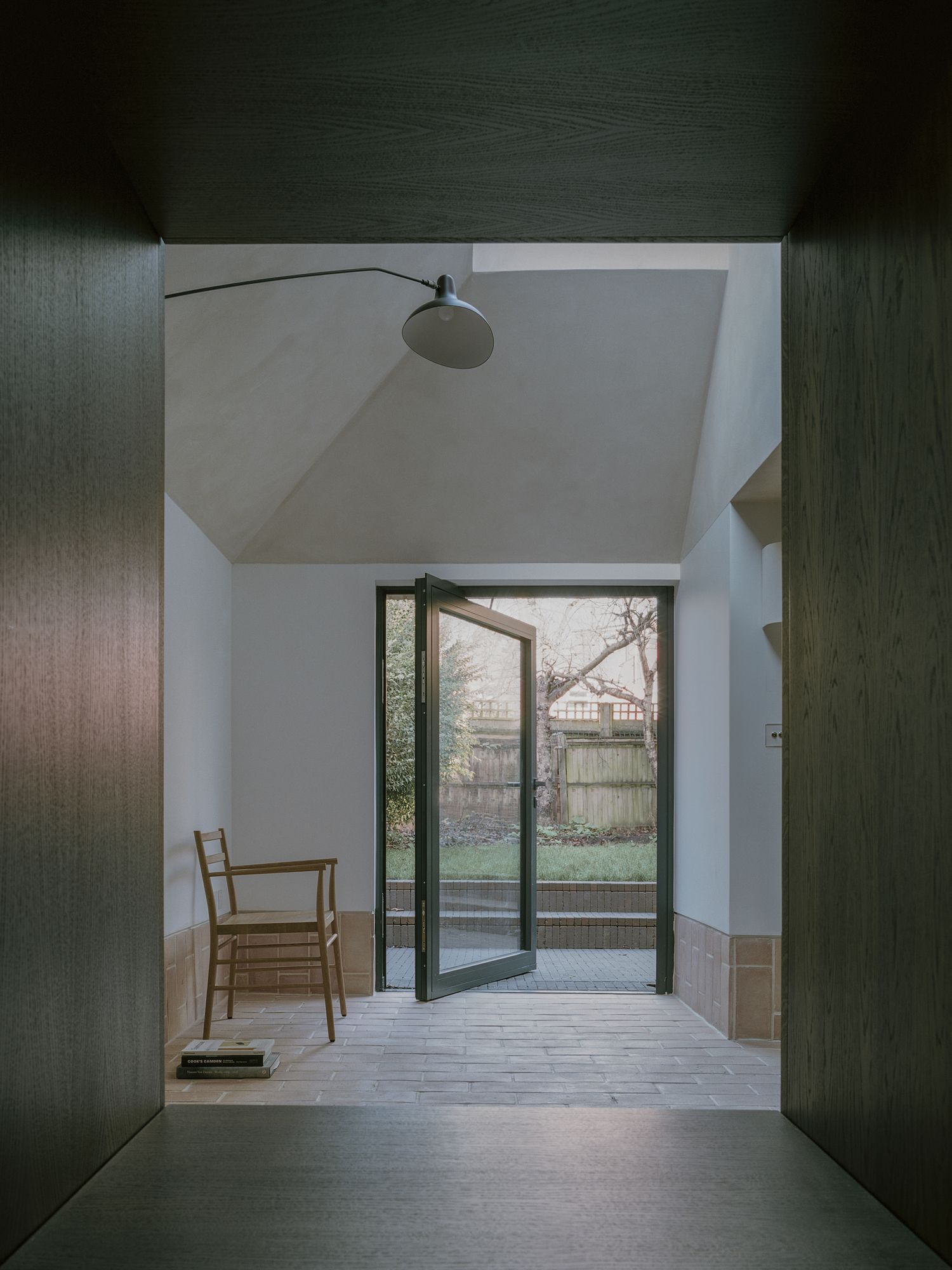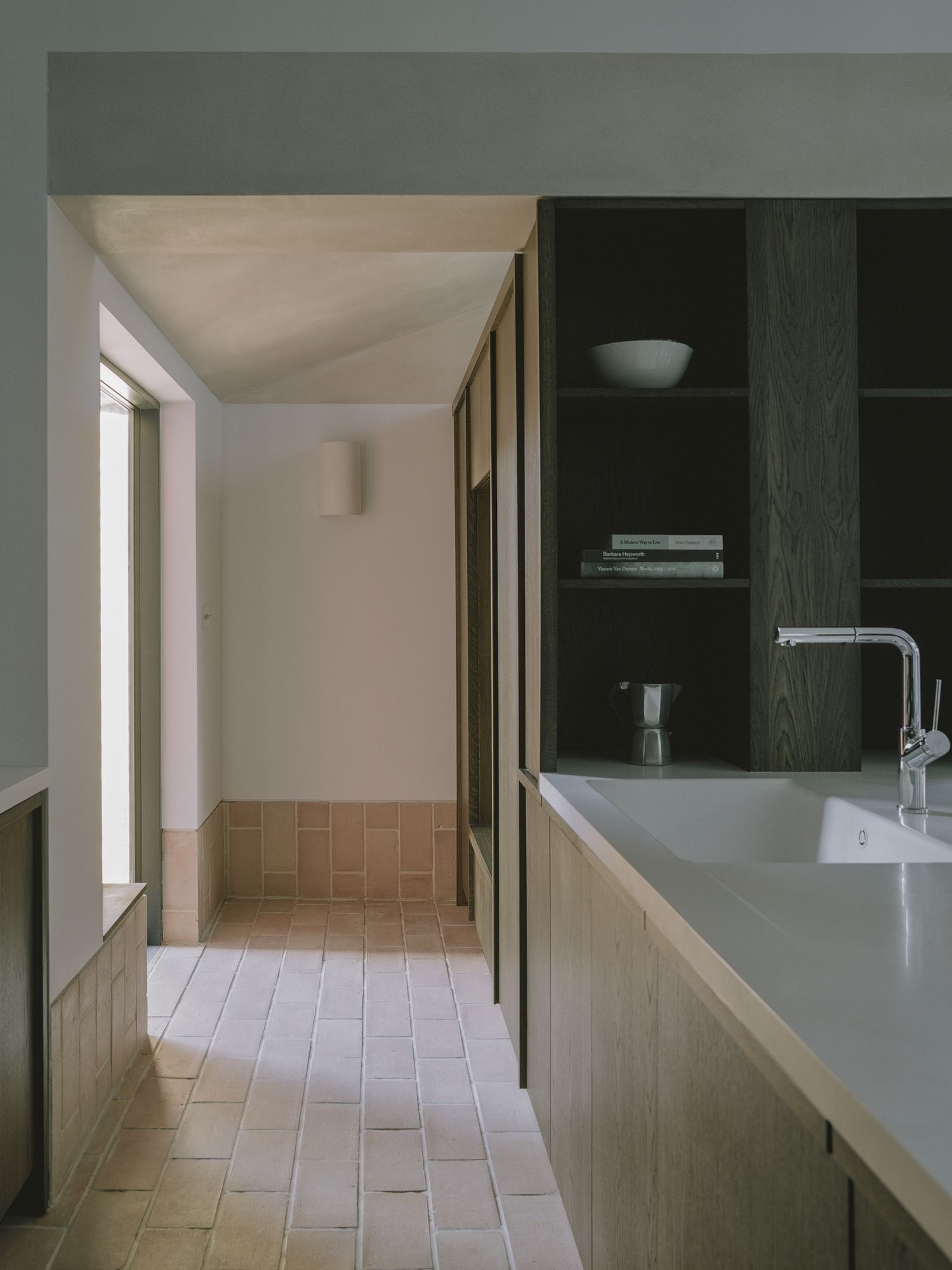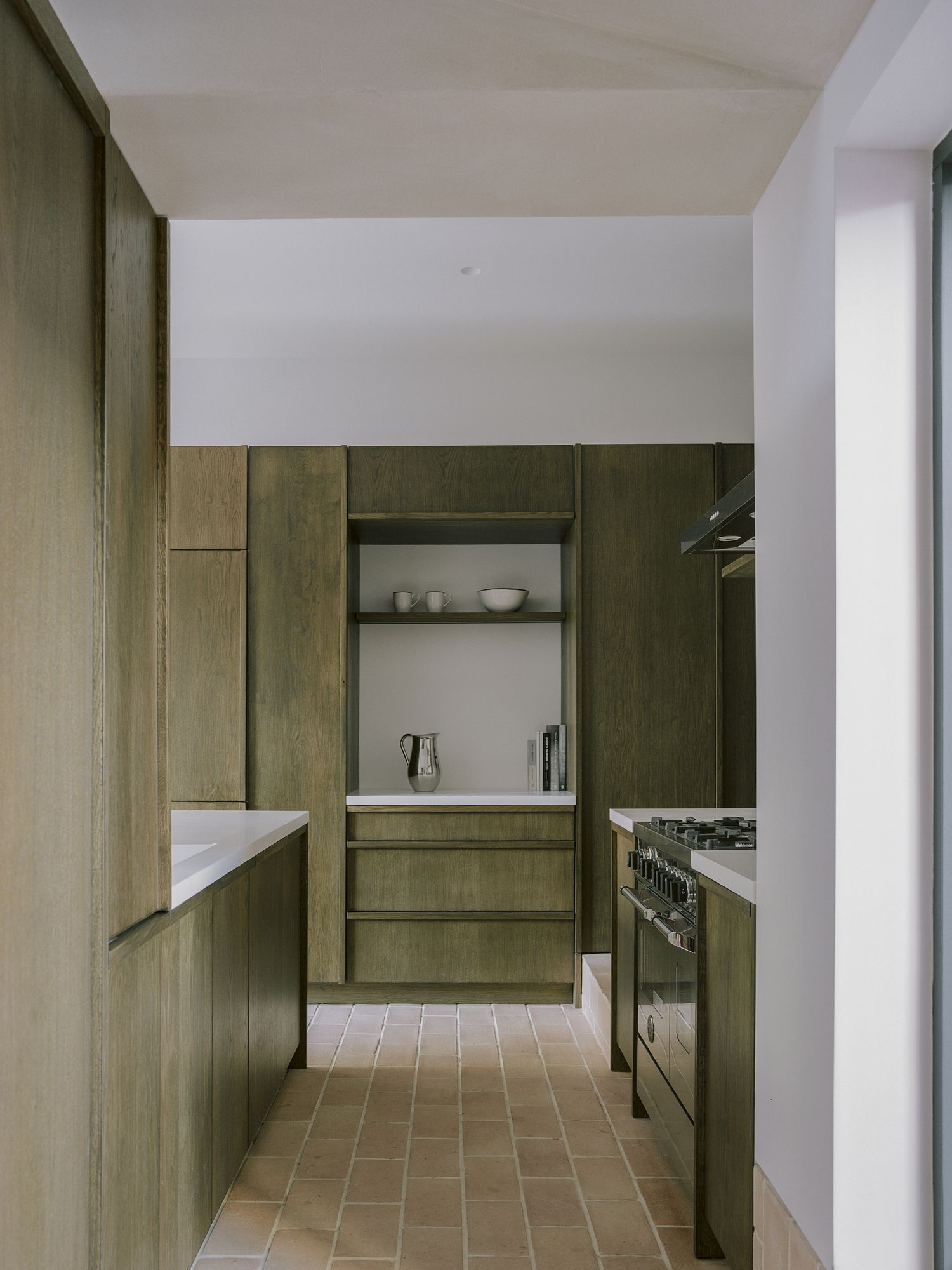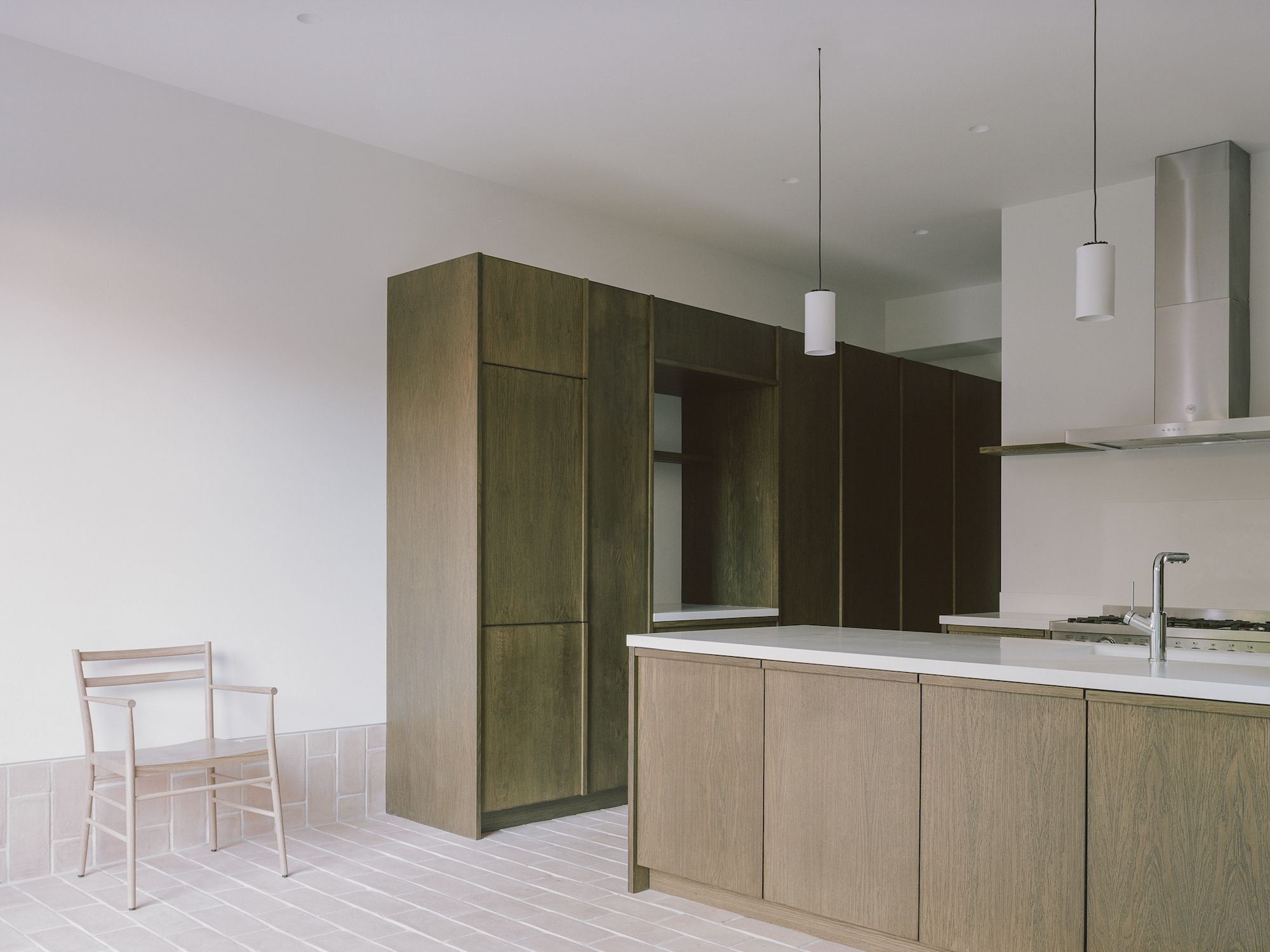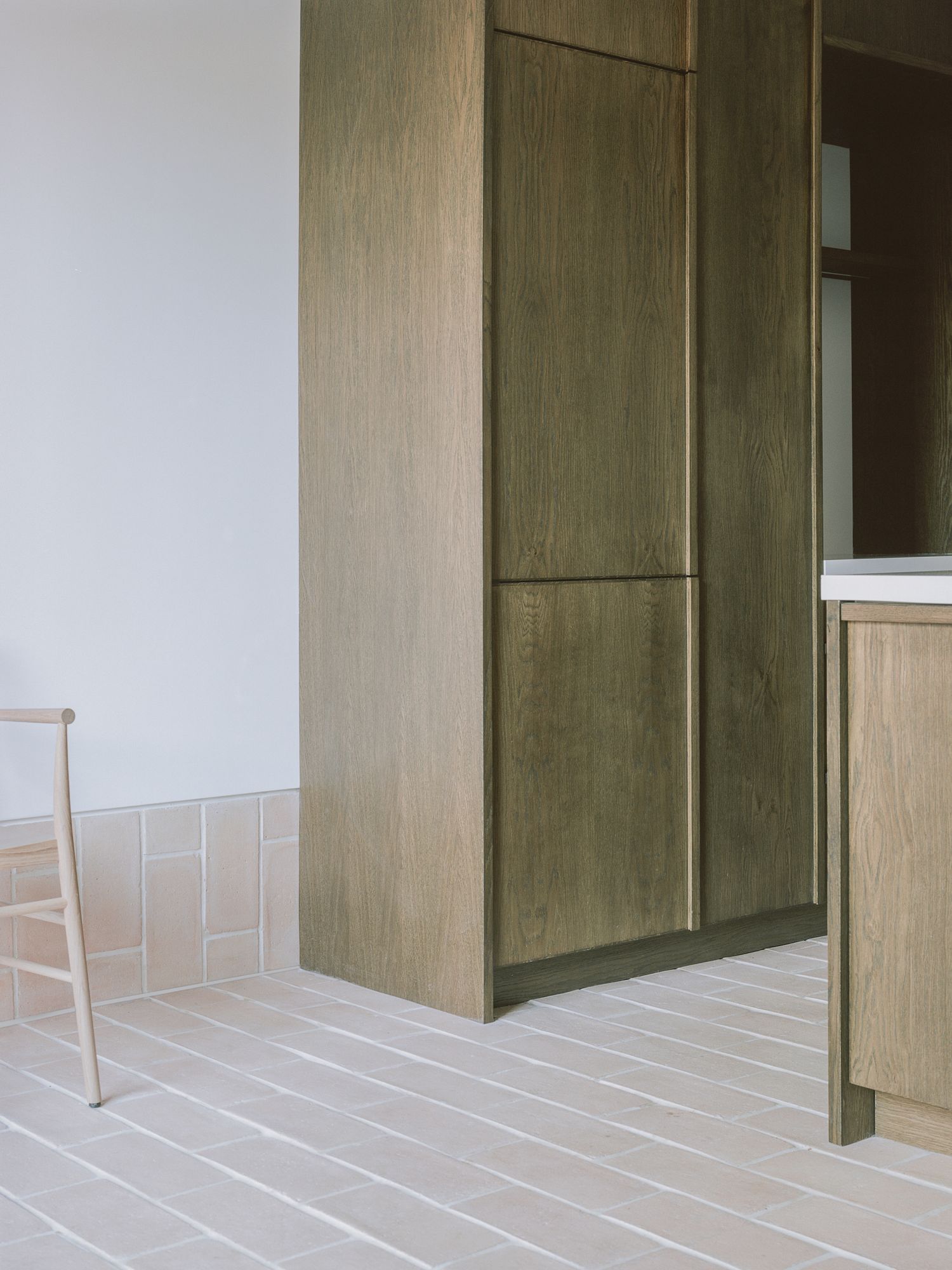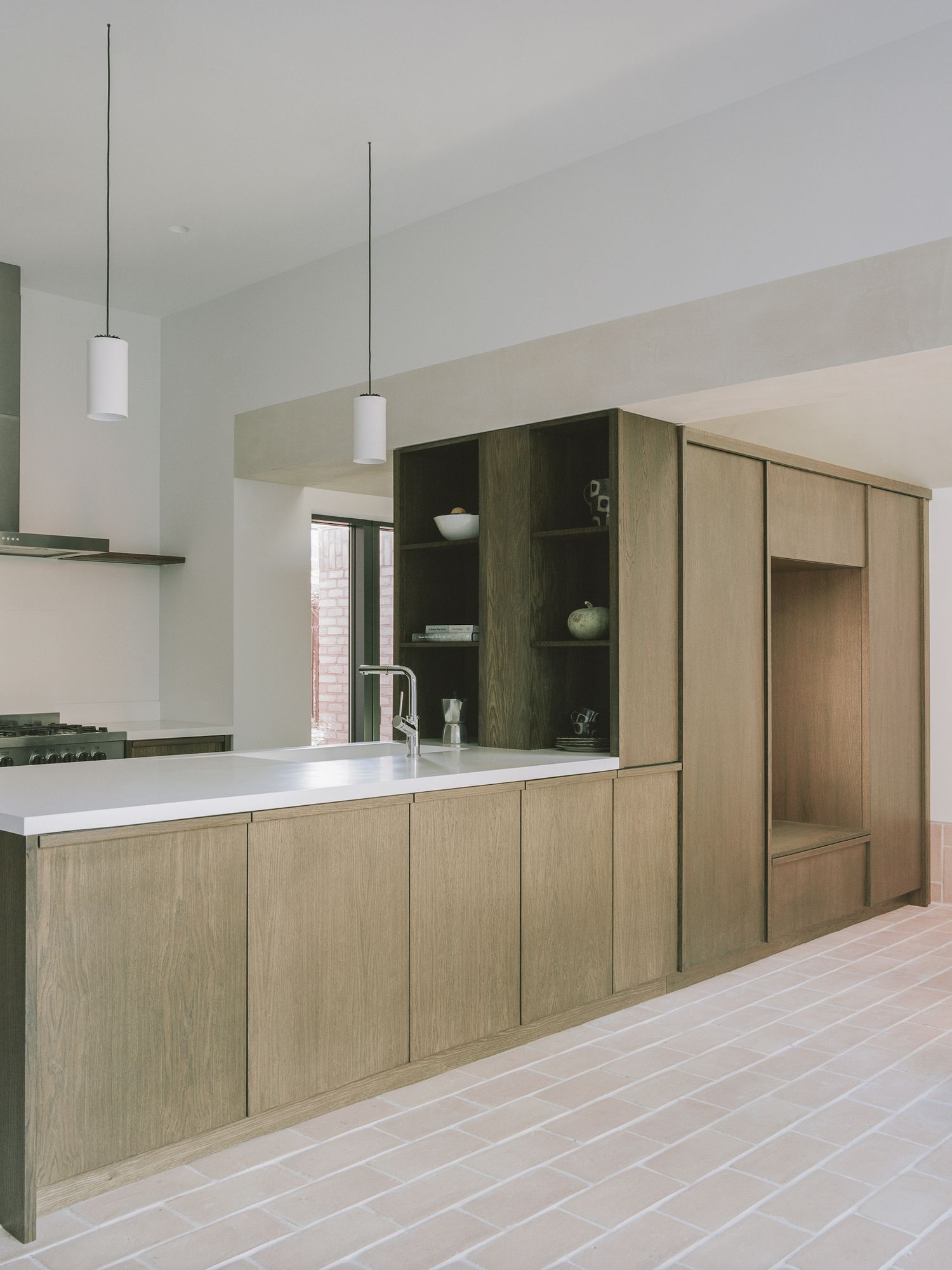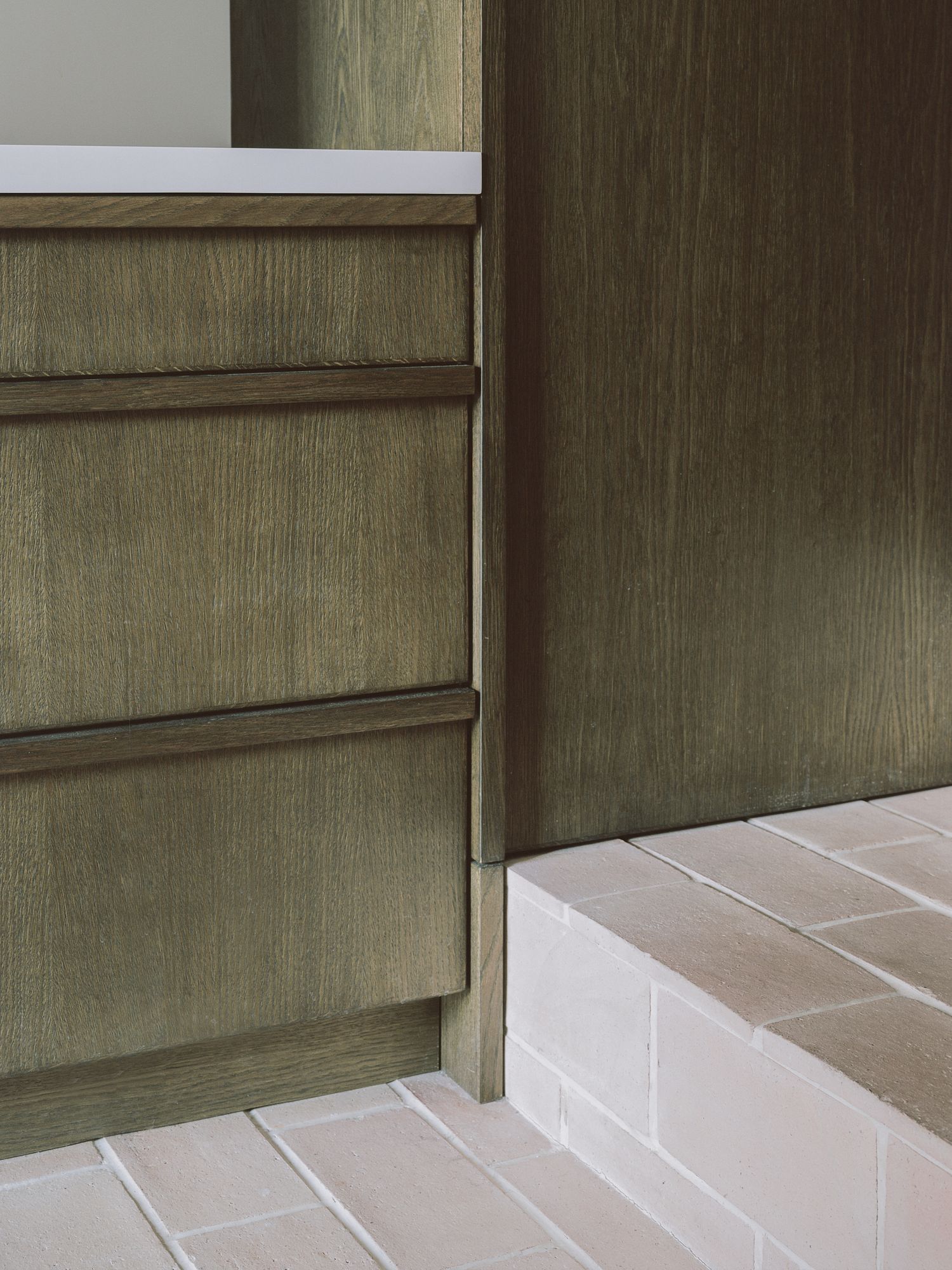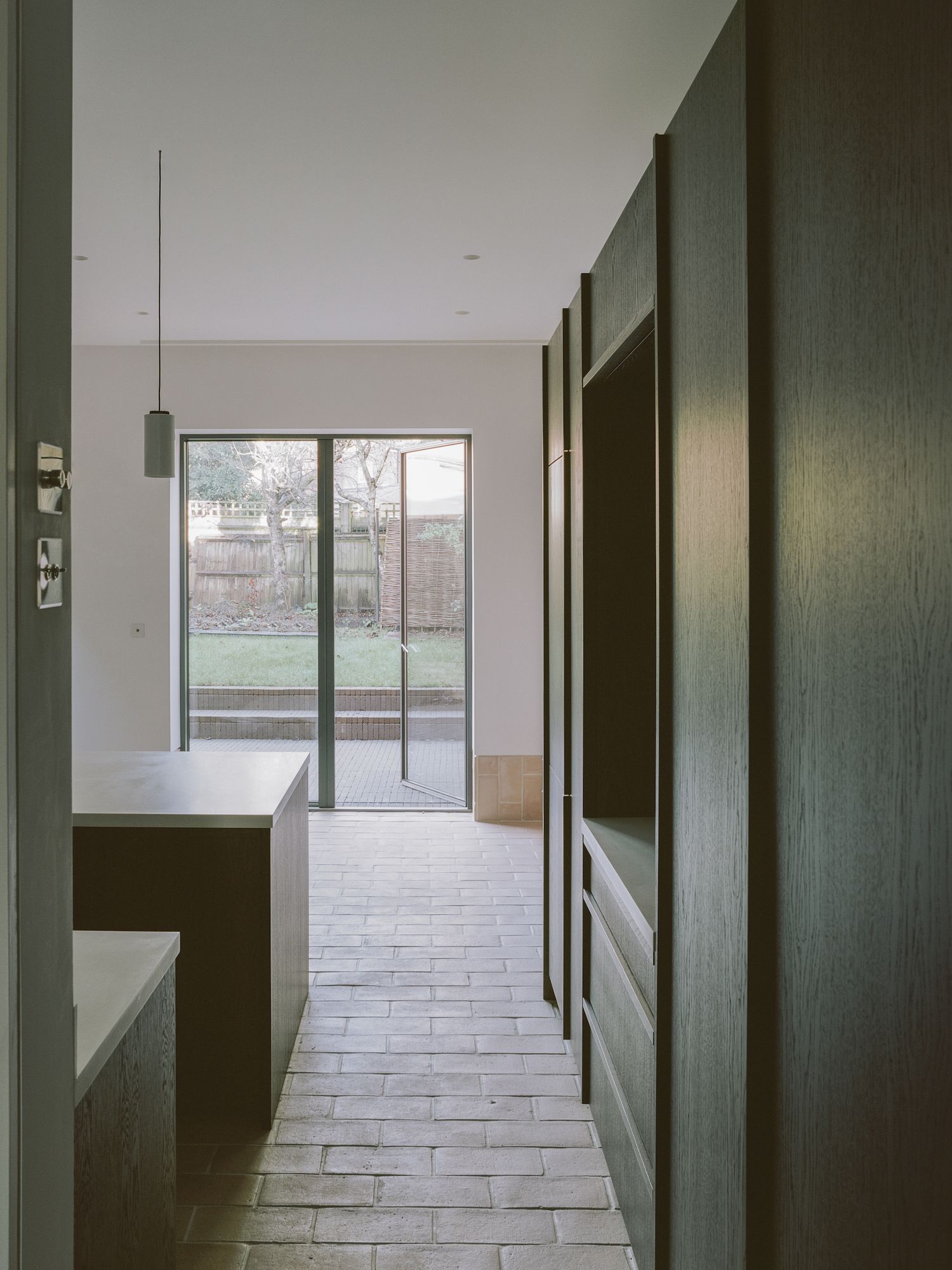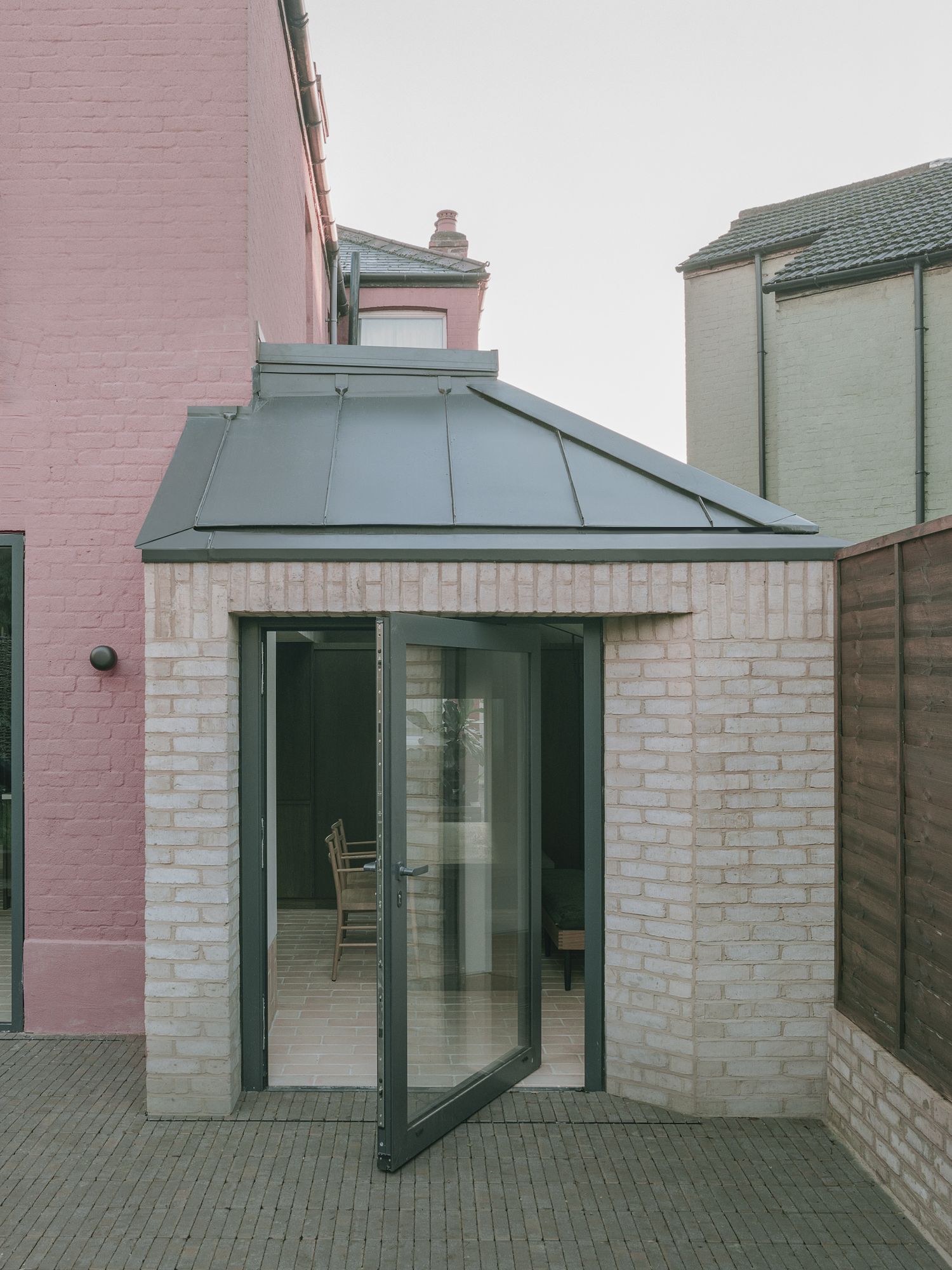Aperture House is a minimal residence located in London, United Kingdom, designed by Studio McW. Studio McW has extended and refreshed a tired Edwardian semi-detached house in North London, inserting a series of architectural apertures to maintain the clients’ connection to nature and each other while working from home. The clients, a young couple working in journalism and psychiatry, became acutely aware of the shortcomings of their existing ground floor layout during the first lockdown of 2020. Studio McW was promptly appointed to reorganize the plan to better accommodate both clients working from home, and introduce a flexible floor plan for cooking, dining, and relaxation.
The clients briefed Studio McW to maintain strong visual connections to the rear and side gardens, and enhance the natural light levels of the home. Studio McW met the brief designing a series of carefully placed apertures and openings in the facade, roof and joinery to maintain the clients’ connection to nature and each other while home working, without sacrificing privacy needed for meetings. To accomplish this, Studio McW shifted the mass of the extension back towards the rear garden, creating an offset volume which allowed space for a small central courtyard to provide light to three rooms at the core of the home. A single, off-centre aperture in the pyramidal roof form is orientated to capture the slithers of light between the neighboring buildings and sit directly above a bespoke dining table. A custom oak storage wall designed by Studio McW acts as a partition between the side entrance and new living and dining area, providing storage for shoes, pet accessories and coats. The chocolate stained timber continues into the kitchen, drawing inhabitants through the house.
A large nook seat in the joinery offers multiple uses; a place to sit and remove shoes, a booth to read, the extension of dining seating and creates garden views from entry. The architects designed oversized thresholds to create purposeful entry into the home and promote a sense of relaxation. Openings in the new extension were set back within deliberately deep, angled brick thresholds, which were designed to retain views through the house and into the rear garden, let in light at specific times of the day and encourage cross ventilation. The interior palette features natural materials including soft terracotta floor tiles and clay plaster to maintain good interior air quality. The kitchen has its own apertures to allow for kettles, toasters and preparation equipment, ensuring surfaces are clear and easily cleaned.
Photography by Lorenzo Zandri
